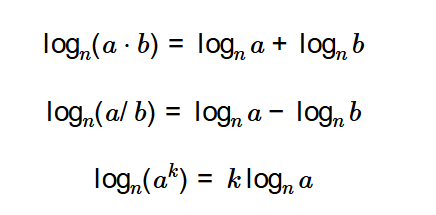1. What is an Expanding Logarithms Calculator?
Definition: This calculator expands logarithmic expressions using logarithm properties, breaking down expressions like , , or into sums, differences, or products of logarithms with base . It supports the product rule, quotient rule, and power rule.
Purpose: It aids in mathematics education and problem-solving by simplifying logarithmic expressions, useful in algebra, calculus, and scientific computations.
2. How Does the Calculator Work?
The calculator uses the following logarithm properties:
- Product Rule:
- Quotient Rule:
- Power Rule:
Steps:
- Select the operation type (Product Rule, Quotient Rule, Power Rule).
- Input the arguments and , exponent , and base , as required.
- Validate inputs (, , , ; can be any real number).
- Compute the expanded expression based on the selected operation.
- Calculate the numerical value of the expanded expression.
- Format the output to 4 decimal places or scientific notation for very small or large values.
3. Importance of Expanding Logarithms
Expanding logarithms is essential for:
- Mathematics Education: Understanding logarithm properties for simplifying expressions.
- Science and Engineering: Breaking down complex logarithmic equations in fields like acoustics (decibels), chemistry (pH), or signal processing.
- Problem Solving: Simplifying logarithmic terms in calculus or algebra for easier computation.
4. Using the Calculator
Examples:
- Product Rule: , , Base
Expression: .
- Quotient Rule: , , Base
Expression: .
- Power Rule: , , Base
Expression: .
5. Frequently Asked Questions (FAQ)
Q: What does it mean to expand logarithms?
A: Expanding logarithms means breaking down a single logarithmic expression into multiple terms using properties like the product rule, quotient rule, or power rule.
Q: Why can’t the base be 1?
A: The logarithm with base 1 is undefined because for all , so it cannot produce a unique value.
Q: Can the arguments be negative?
A: No, the arguments and must be positive, as logarithms are defined only for positive numbers in the real number system.
Expanding Logarithms Calculator© - All Rights Reserved 2025
 Home
Home
 Back
Back
